Cambridge, MA Pollen and Allergy Report for Summer 2023
Pollen Allergy Trends in Cambridge, MA
When is pollen lowest in Cambridge, MA?

February
Lowest month total PPM
Avg. PPM
When is pollen highest in Cambridge, MA?

April
Highest month total PPM
Avg. PPM
How does pollen in Cambridge, MA compare to Massachusetts?
Cambridge has a lower average PPM than the state of Massachusetts.
Cambridge yearly avg PPM:
Massachusetts yearly avg PPM:
How does pollen in Cambridge, MA compare to the USA?
Cambridge has a higher average PPM than the USA.
Cambridge yearly avg PPM:
USA yearly avg PPM:
Is pollen worse this year in Cambridge, MA?
Spring 2023 was worse than spring 2022.
Spring 2023 PPM:
Spring 2022 PPM:
Average PPM in Cambridge, MA
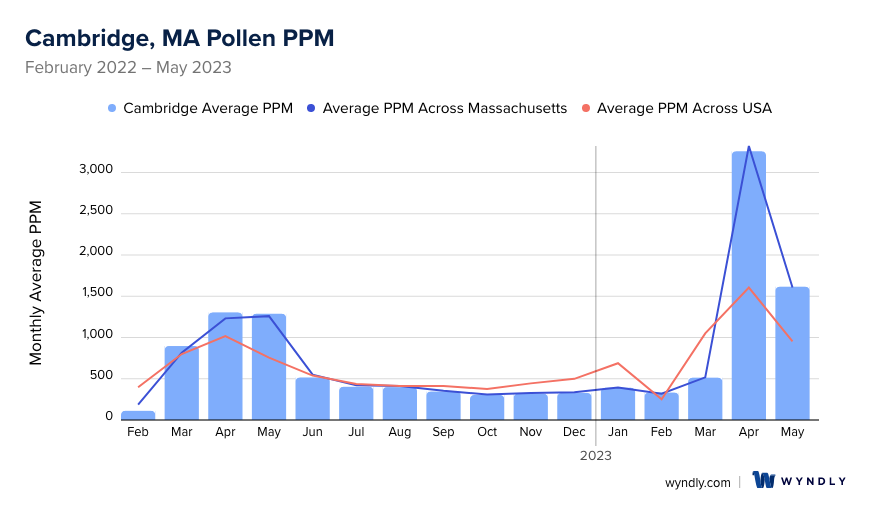
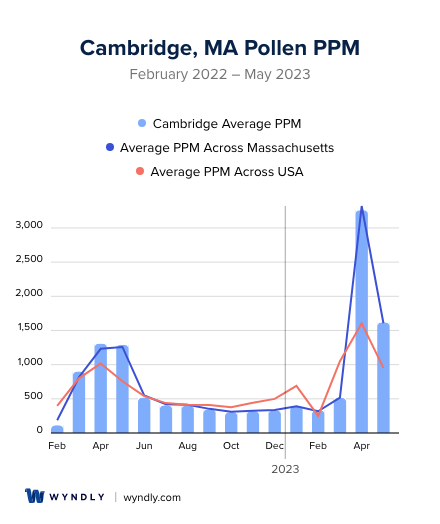
Cambridge, MA Pollen and Allergy Breakdown by Month
Grass
When is grass pollen highest in Cambridge, MA?
April has the highest grass pollen in Cambridge, MA with an average PPM of
When is grass pollen lowest in Cambridge, MA?
December has the lowest grass pollen in Cambridge, MA with an average PPM of
Tree
When is tree pollen highest in Cambridge, MA?
April has the highest tree pollen in Cambridge, MA with an average PPM of
When is tree pollen lowest in Cambridge, MA?
October has the lowest tree pollen in Cambridge, MA with an average PPM of
Weed
When is weed pollen highest in Cambridge, MA?
April has the highest weed pollen in Cambridge, MA with an average PPM of
When is weed pollen lowest in Cambridge, MA?
February has the lowest weed pollen in Cambridge, MA with an average PPM of
Cambridge, MA Pollen Monthly Breakdown by Pollen Type
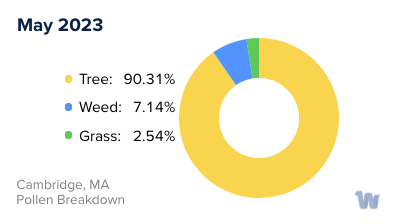
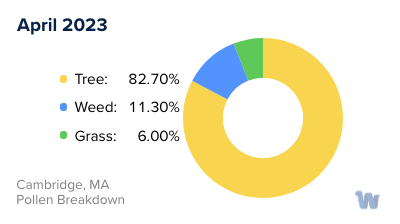
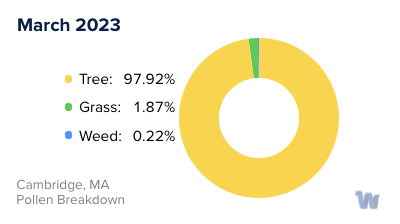
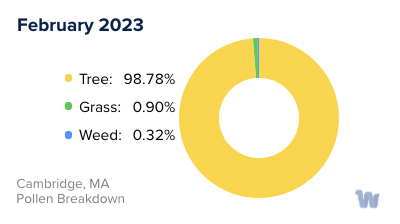
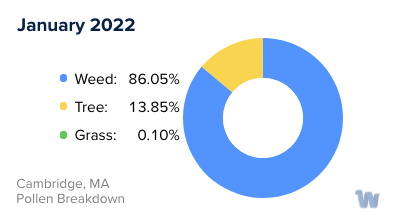
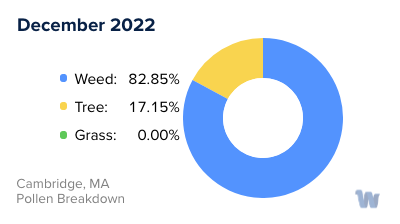
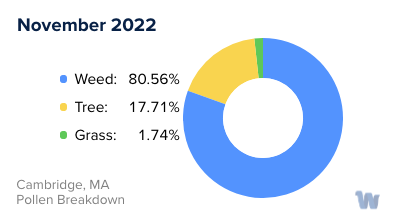
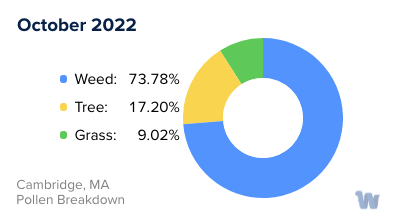
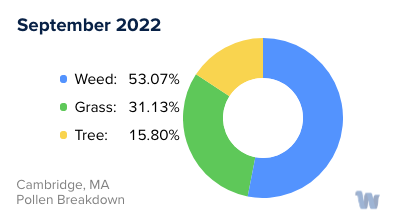
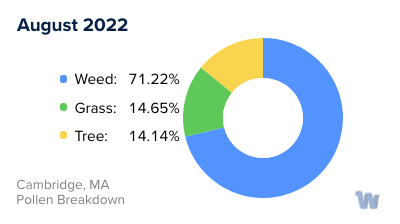
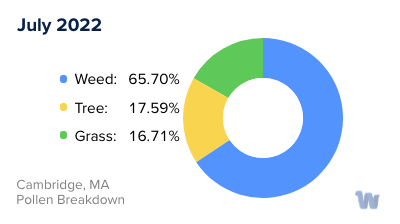
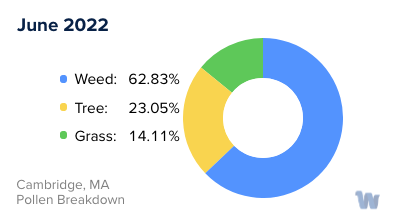
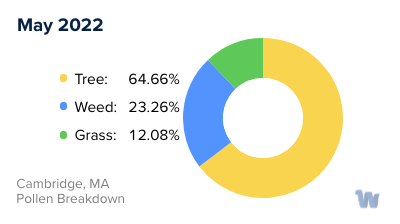
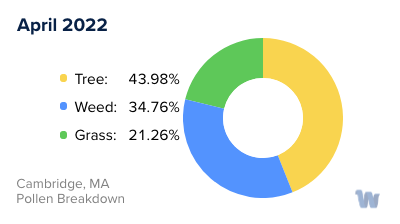
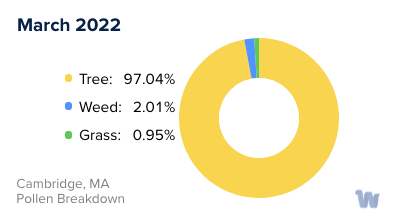
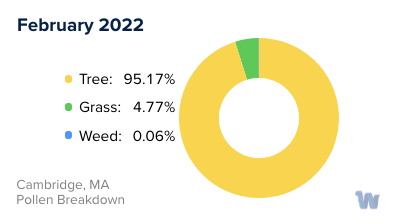
Pollen and Hay Fever in Cambridge, MA
In the charming city of Cambridge, Massachusetts, the promise of blooming flowers and lush greenery is always accompanied by a less welcome guest: pollen. For those with pollen allergies, also known as hay fever, this can make spring and summer months a challenge.
Pollen is a fine powder produced by certain types of plants as part of their reproductive process. As the wind carries these tiny grains through the air, they can enter our bodies through our noses and throats. For those with allergies, this can trigger an immune response leading to symptoms such as sneezing, itchy eyes, and a runny nose.
In Cambridge, two of the main culprits for pollen allergies are tree pollen and grass pollen. Each has its own unique season when it reaches peak levels, known as a pollen season.
Tree pollen season typically begins in early spring. The city is home to a variety of tree species including oak, maple, and birch, all of which produce high amounts of pollen. These species typically release their pollen in the morning, and levels can remain high throughout the day, especially on windy, dry days.
Grass pollen season, on the other hand, usually arrives in late spring and can extend into early summer. Common grasses in the area such as Kentucky bluegrass, ryegrass, and fescue are known to cause allergic reactions. Unlike tree pollen, grass pollen levels tend to peak in the afternoon and early evening.
While pollen levels can vary year to year based on factors like temperature and rainfall, they generally follow these seasonal patterns. For residents of Cambridge, understanding these patterns can be the first step in managing their symptoms and enjoying the beauty of the city's changing seasons.
Without discussing treatments or remedies, it's important to note that pollen allergies, while common and often mild, can significantly impact quality of life. If you're experiencing symptoms, don't hesitate to seek advice from a healthcare professional. They can provide guidance on how to navigate pollen seasons based on your personal health history and specific allergen sensitivities.

